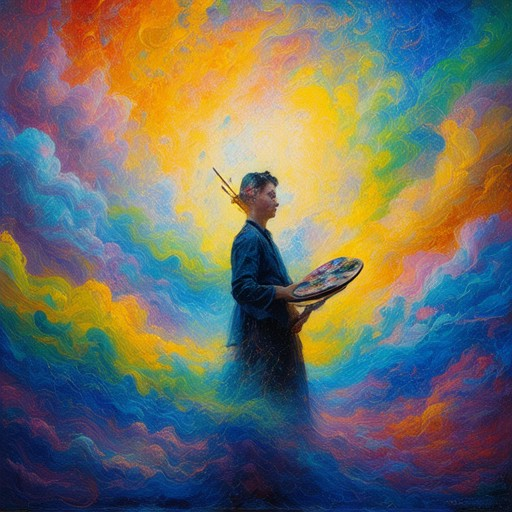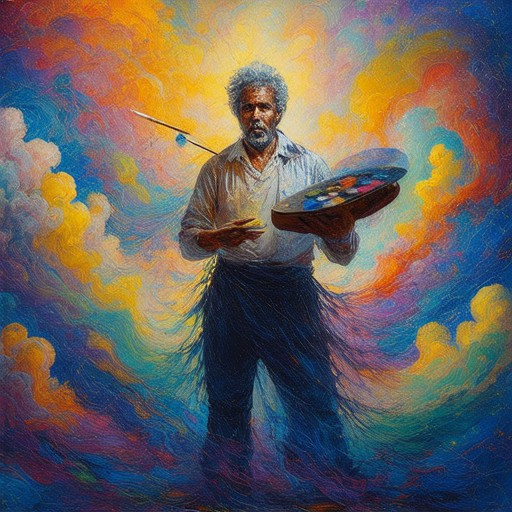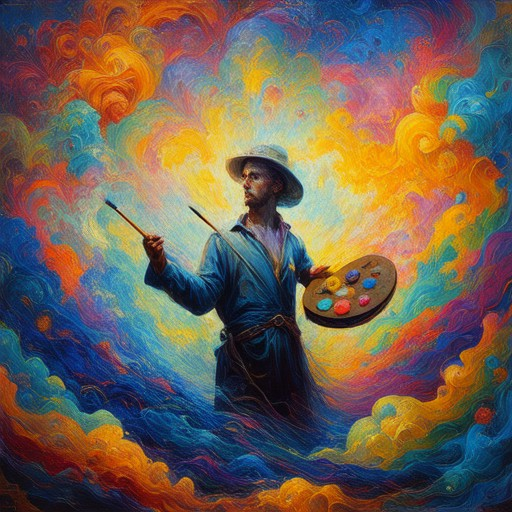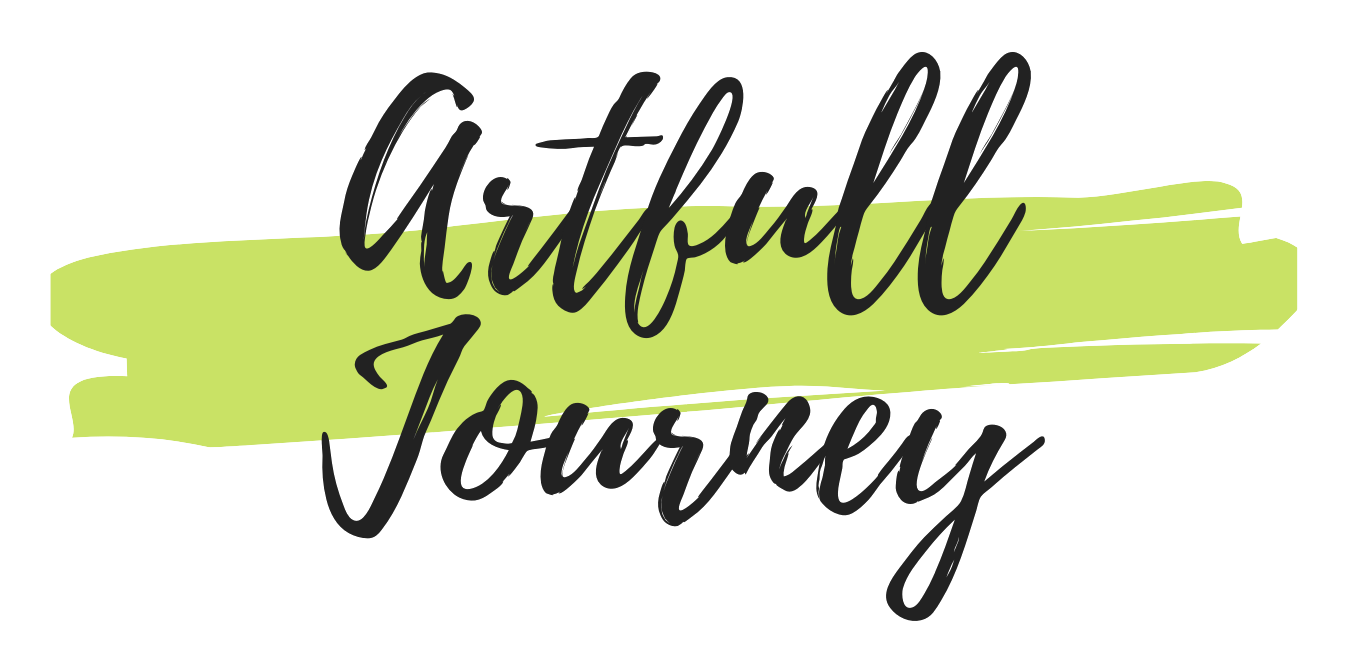Professional artists often find themselves stuck in creative ruts, struggling to balance innovation with efficiency in their work. Whether it’s mastering new techniques, refining personal styles, or managing time effectively, achieving peak performance can feel elusive. However, with the right art tips tailored to the unique challenges faced by professionals, anyone can unlock their full potential and elevate their workflow. From honing your craft to staying inspired, this guide offers actionable strategies that will help you thrive in the ever-evolving world of art. Discover how to overcome creative blockades, leverage technology, and build a portfolio that stands out, ensuring your work not only impresses but also meets the demands of a competitive industry.
Key Takeaways
- Stay Inspired and Explore New Techniques to Boost Creativity and Elevate Your Workflow.
- Develop a Personal Style to Stand Out and Build a Cohesive Body of Work.
- Network Confidently with Art Professionals to Advance Your Career.
- Critically Analyze Your Work and Seek Feedback for Growth.
- Maintain a Balanced Lifestyle to Sustain Productivity and Innovation.
- Continuously Learn and Adapt to Stay Ahead in the Evolving Art Landscape.
- Streamline Your Workflow with Digital Tools for Greater Efficiency.
- Engage with Art Communities to Connect and Expand Your Audience.
- Persevere Through Challenges and Embrace Constructive Criticism.
- Regularly Share Your Work to Gain Valuable Insights and Feedback.

Professional Artist Tips: Mastering Your Craft
As a professional artist, refining your skills and staying inspired is crucial. Here are expert-level tips tailored for artists looking to excel in their craft:
1. Sharpen Your Technique
Perfect your medium-specific skills. Whether you work in oil, acrylic, digital, or mixed media, practice daily to build mastery. Consider taking workshops or watching tutorials from renowned artists like Artful Journey to gain insights into advanced techniques.
2. Explore Unique Styles
Experiment with diverse styles and mediums to find your signature approach. Study iconic artists like Jackson Pollock for abstract expressionism or Klimt for his golden era techniques. Push boundaries and blend traditional methods with modern innovations.
3. Develop a Strong Portfolio
Your portfolio is your calling card. Curate pieces that showcase your unique vision and versatility. Include a variety of works, from large-scale paintings to small sketches, to demonstrate your range. Use platforms like ArtStation or Behance to share your work and connect with potential clients or collaborators.
4. Network and Collaborate
Building relationships with fellow artists and art professionals can open doors to new opportunities. Attend art fairs, exhibitions, and online communities. Collaborative projects not only inspire creativity but also expose your work to broader audiences.
5. Prioritize Self-Care
Artist burnout is real. Maintain a healthy work-life balance by setting boundaries and incorporating mindfulness practices. A well-rested mind produces more innovative ideas, so take care of yourself to sustain long-term success.
6. Stay Curious and Evolve
Continuous learning is essential in the arts. Follow emerging trends, explore new materials, and engage with global art movements. Stay curious about different cultures and perspectives to enrich your creative process.
7. Leverage Technology
Use digital tools to enhance your workflow. From AI art generators to Wacom tablets, technology can streamline your creative process. Explore online courses and forums like Artful Journey to discover the latest digital tools and techniques.
By implementing these tips, you can elevate your artistic career and leave a lasting impact on the art world. Remember, mastery takes time, so enjoy the journey and keep creating!
What Art Tips Can Help Professional Artists Improve Their Craft?
Improving your craft as a professional artist requires a combination of technique, creativity, and continuous learning. Here are some proven strategies to help you elevate your skills:
1. Explore New Mediums and Tools
Experiment with different materials and tools to challenge yourself and discover new creative avenues. Whether it’s digital painting software, watercolor, or mixed media, try something outside your comfort zone. For instance, explore how to blend traditional and modern mediums on Artfull Journey.
2. Practice Regularly and Consistently
Consistency is key to mastery. Dedicate time each day to work on your craft, even if it’s just for 15 minutes. This helps build muscle memory and keeps your creative momentum going. Track your progress over time to see noticeable improvements.
3. Study and Be Inspired by Masters
Learn from the greats by studying their techniques, styles, and compositions. Analyze famous artworks and deconstruct what makes them impactful. Visit museums, watch tutorials on platforms like YouTube , and read books on classical art techniques.
4. Experiment with New Techniques
Don’t fear to take risks and try unconventional approaches. Whether it’s layering textures, using stencils, or incorporating unexpected colors, experimentation can lead to breakthroughs. Check out advanced techniques on Artfull Journey to inspire your next project.
5. Network and Collaborate with Peers
Join art communities and collaborate with other artists to gain feedback and fresh perspectives. Attend local art shows, workshops, or online forums like DeviantArt . Sharing your work can provide valuable insights and open doors to new opportunities.
6. Document and Reflect on Your Work
Take photos of your finished pieces and sketchbooks to track your evolution. This documentation serves as a visual journal, helping you identify strengths and areas for improvement. Share your journey on social media or a personal blog to connect with others who share your passion.
7. Seek Constructive Feedback
Share your artwork with trusted friends, mentors, or online groups to get honest feedback. Constructive criticism can highlight blind spots and provide guidance for growth. Use platforms like ArtStation to showcase your work and engage with a supportive community.
8. Stay Inspired by Nature and Culture
Find inspiration in the world around you—observe nature, architecture, and cultural movements. Visit museums, attend galleries, or explore public art installations. Let these experiences fuel your creativity and push your boundaries.
9. Optimize Your Artistic Workflow
Streamline your process to focus on creativity rather than frustration. Use time-saving tools and organize your supplies. Experiment with digital tools to automate repetitive tasks, allowing you to spend more time on innovative ideas.
10. Utilize Resources and Tutorials
Leverage free online resources and paid courses to deepen your knowledge. Platforms like Udemy offer affordable courses taught by experienced artists. Invest in high-quality art books and subscribe to newsletters for updates on new workshops and events.
By implementing these tips, you can continuously grow as an artist, refine your style, and produce work that resonates with viewers. Remember, the journey is as important as the destination, so enjoy the process and keep creating!

Effective Art Tips for Professional Artists
- Consistent Practice and Exploration: Dedicate specific times each day to artistic creation. Experiment with different mediums, styles, and techniques to push your boundaries and discover new strengths.
- Understand Art History and Theory: Study iconic works and movements to draw inspiration and develop a deeper appreciation for art. This knowledge enriches your creative process and helps you communicate more effectively.
- Experiment and Iterate Regularly: Don’t fear mistakes. Use failures as opportunities to learn and grow. Keep a portfolio of your experiments to track progress and inspiration.
- Seek Feedback and Collaboration: Share your work with trusted peers or mentors. Their perspectives can reveal new possibilities and help refine your approach. Consider joining artist communities for collaborative projects.
- Stay Inspired and Curious: Explore galleries, museums, and online platforms to find fresh ideas. Engage with diverse art forms and cultures to fuel your creativity and keep your work dynamic.
- Develop a Personal Style: While drawing from influences, establish a unique voice. This distinctiveness sets you apart and resonates more deeply with your audience.
- Network and Collaborate: Build relationships with other artists, curators, and gallerists. Collaborative projects can open new opportunities and challenge your creative process.
- Teach and Share Knowledge: Mentoring others can reinforce your own learning. Leading workshops or classes forces you to articulate your methods and deepen your understanding of art.
- Document and Reflect: Keep a journal or digital log of your progress. Writing about your thoughts and challenges can clarify your goals and provide insights into your growth as an artist.
- Earn and Adapt to Market Trends: Understand what sells and align your work with market demands. Stay flexible to adapt your style and offerings based on evolving tastes and technologies.
- Embrace Failure as Growth: View setbacks as stepping stones. Every unsuccessful project brings you closer to success. Use these experiences to refine your approach and build resilience.
- Explore Public Art and Community Projects: Engage with public spaces to create impactful, large-scale works. These projects often require collaboration and can broaden your reach and influence.

Practical Art Tips for Professional Artists
- Stay Inspired and Explore New Techniques: Regularly visit art galleries, museums, and online platforms like YouTube or Behance to discover new styles and trends. Experiment with different mediums and tools to refresh your creative process.
- Develop a Personal Style: Identify your unique artistic vision and stick to it. Create a portfolio that showcases your consistent body of work, whether it’s digital art, oil paintings, or sculptures. Use platforms like DeviantArt or Instagram to share your progress.
- Navigate the Art World Confidently: Network with fellow artists, curators, and gallerists. Attend art fairs and exhibitions to understand market demands and build relationships that can advance your career. Utilize platforms like Pinterest for inspiration and ArtStation for professional networking.
- Be Honest in Self-Criticism: Analyze your work critically. Identify strengths and areas for improvement. Seek feedback from peers or mentors to gain fresh perspectives. Use resources like Creative Cloud to refine your skills and stay organized.
- Maintain a Healthy Work-Life Balance: Avoid burnout by setting boundaries. Schedule regular breaks and engage in hobbies that recharge your creativity. A balanced lifestyle contributes to sustained productivity and innovative thinking.
- Continuous Learning and Adaptation: Stay updated with the latest trends and technologies in art. Take online courses or workshops to learn new techniques and tools. Platforms like Udemy offer diverse learning opportunities for artists at all levels.
- Leverage Technology for Efficiency: Use digital tools and software to streamline your workflow. Tools like Adobe Creative Cloud enable seamless creation, editing, and collaboration. Share your work digitally to reach global audiences.
- Engage with Art Communities: Join forums, groups, and social media channels dedicated to artists. Participate in challenges and collaborations to foster creativity and connections. Websites like Flickr and Redbubble can help showcase your work to a wider audience.
- Persist and Embrace Feedback: Success rarely comes overnight. Keep refining your craft and remain open to constructive criticism. Use feedback as a catalyst for growth and innovation in your artistic journey.
Professional Art Tips to Elevate Your Work
Whether you’re a seasoned artist or looking to refine your skills, these expert tips can help you take your artwork to the next level:
- Master Shading and Lighting : Understand how light and shadow interact to create depth and dimension in your pieces. Practice using techniques like shading tutorials to bring your subjects to life.
- Perfect Composition : A strong composition guides the viewer’s eye and keeps the focus on your artwork. Experiment with composition guides to arrange elements effectively.
- Explore Color Theory : Color plays a crucial role in conveying emotion and mood. Study color theory principles to create more dynamic and impactful works.
- Experiment with Mixed Media : Combine traditional mediums with modern tools to unlock unique textures and effects. Try incorporating digital tools with your mixed media projects .
- Study Great Artists : Analyze works from masters like da Vinci, van Gogh, and Picasso to understand their techniques and styles. Use art analysis resources to inspire your own creations.
- Practice Regularly : Consistency is key to mastery. Dedicate time daily to create, experiment, and review your progress. Track your journey with art planner tools .
- Seek Feedback : Share your work with peers or join online communities like DeviantArt or Behance to get constructive criticism and insights.
- Stay Inspired : Explore new genres, movements, and cultural influences to keep your creativity fresh. Utilize inspiration sources to spark your next project.
By implementing these tips and continuously learning, you can push your artistic boundaries and create truly remarkable work.

What Art Tips Can Help Professional Artists Improve Their Skills?
Improving your skills as a professional artist requires dedication, curiosity, and a willingness to learn. Here are some expert-level tips to help you elevate your craft:
- Master Your Techniques:** Focus on refining your core skills, whether it’s drawing, painting, or sculpting. Practice daily to build muscle memory and develop a unique style.
- Experiment with Mediums:** Don’t stick to one medium. Explore different materials like watercolors, pastels, or digital tools to broaden your creative horizons.
- Study Composition:** Learn how to arrange elements in your artwork for better balance and impact. Use techniques like rule of thirds and leading lines.
- Seek Inspiration:** Look at works from diverse artists to spark creativity. Visit museums, galleries, or online platforms like Artful Journey for fresh ideas.
- Get Feedback:** Share your work with peers or mentors to gain constructive criticism. This helps identify strengths and areas for improvement.
- Stay Curious:** Constantly ask questions and explore different art movements. The more you know, the better your work will reflect your individuality.
Remember, practice is key. The more time you invest in honing your skills, the more your work will evolve and stand out in the competitive world of art.




0 Comments